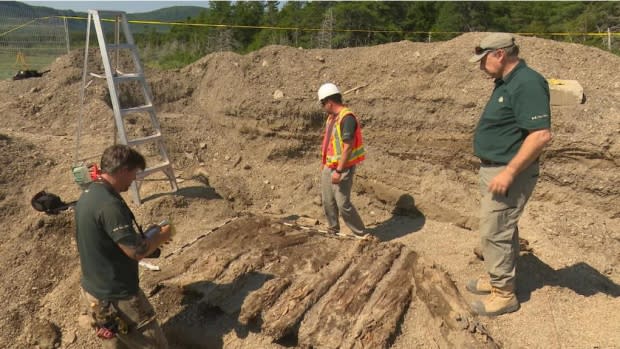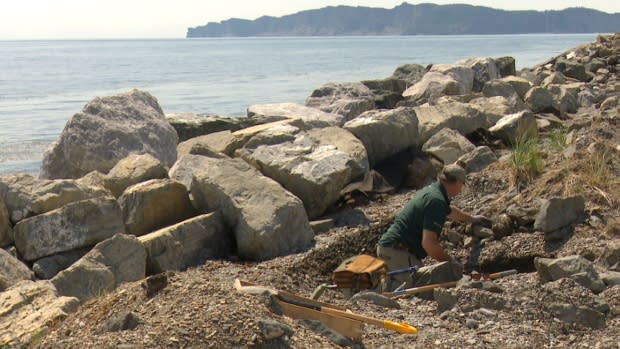Human remains found in Gaspé are from 1847 shipwreck, Parks Canada confirms
Scientists have confirmed a long-held theory of locals in Gaspé, Que., that the human remains of 21 individuals, unearthed over a five-year period, are from an 1847 Carricks shipwreck.
The ship left Sligo, Ireland, carrying 180 passengers fleeing the Potato Famine, also known as the Great Hunger. It sank off the coast of Cap-des-Rosiers in Gaspé, killing as many as 150 people.
The bones of three children washed up on the shore in 2011 after a harsh storm, and the remains of another 18 individuals were unearthed in 2016 before a beach restoration.
The remains were sent to Parks Canada offices in Ottawa, and then to researchers at the Montreal University for analysis.
"This is like the end of the story for people who were interested in this," said Mathieu Côté, a resource conservation manager at Forillon National Park.
"We were suspicious of where [the remains] were from, and we had a good idea where they were from, but now we have evidence that those people were from Ireland."
Côté started with Parks Canada about a year before the first remains were found. He called the last eight years a "great project" that's shed light on an important part of Canada's history.
"They were old bones, and they were very fragile," Côté said, adding that 160 years of saltwater exposure worsened their condition.

Determining diet key to confirmation
Scientists used samples of the bones to determine their chemical composition and identify their origins.
"We did our best because the remains were very fragmentary," said Isabelle Ribot, an associate professor of bioarcheology at Montreal University, who was involved with the analysis.
"They were extremely fragile," she said. "As soon as you touched, them they would start to crumble."
The analysis showed that the bones belonged to people whose diets were characteristic of a rural population dependent on agriculture — specifically potatoes — as was typical of the Irish population at the time.
"Our skeletons reflect what we eat," Ribot said, explaining that scientists are able to determine whether a person had a protein- or vegetable-rich diet based on their bones.
She said chronic health problems like malnutrition are also evident in the bones.
The remains found at Cap-des-Rosiers showed that the shipwrecked people had a diet low in protein, and that they were under nutritional stress, likely caused by the famine in Ireland.

Most of the bones belonged to women and children.
"Knowing the context and knowing there are descendants of the people who survived, it is very emotional and very sensitive," Ribot said "We are very blessed to have been able to analyze them and extract as much information as we can."
Ribot said she would have liked to do ancient DNA analysis on the bones, but it was impossible because of their condition.
The archeologists were also only able to collect about one per cent of some skeletons.
"They probably literally melted because of the context of preservation," Ribot said.
Locals believe beach is a cemetery
Côté said the discovery is in line with the oral history of the area — that there is a mass grave of shipwreck victims on the beach.
"We weren't sure if there was one, but that's what the locals were saying," he said.
Most of the wreck's survivors continued on to Quebec City and Montreal, but some stayed in the area.
"The tragic events of the Carricks shipwreck are a startling reminder of just how difficult the journey was for the travellers and that not everybody was lucky enough to reach their new home," said Diane Lebouthillier, MP for Gaspésie–Les Îles-de-la-Madeleine, in a statement.
"Today's announcement is very significant for Irish families whose ancestors were Carricks passengers," she said. "This shipwreck reflects an important part of Canadian history."

The remains will be taken to Forillon National Park in the coming weeks and a funeral service will be held.
They will be buried near the Irish Memorial on Cap-des-Rosiers Beach, which was erected in 1900 in memory of those who died after the ship sank.
Forty-eight people survived the shipwreck, and 87 bodies have been found of the estimated 120 to 150 dead.


